Since my posts on Muddy Colors and EveryDayOriginal.com happen to fall on the same day this month, I thought I’d post a bit about my painting and show some progression images. This painting is oil on board, 5×7”, and is titled Yuki. (it posts on EDO at 11:45am EDT)
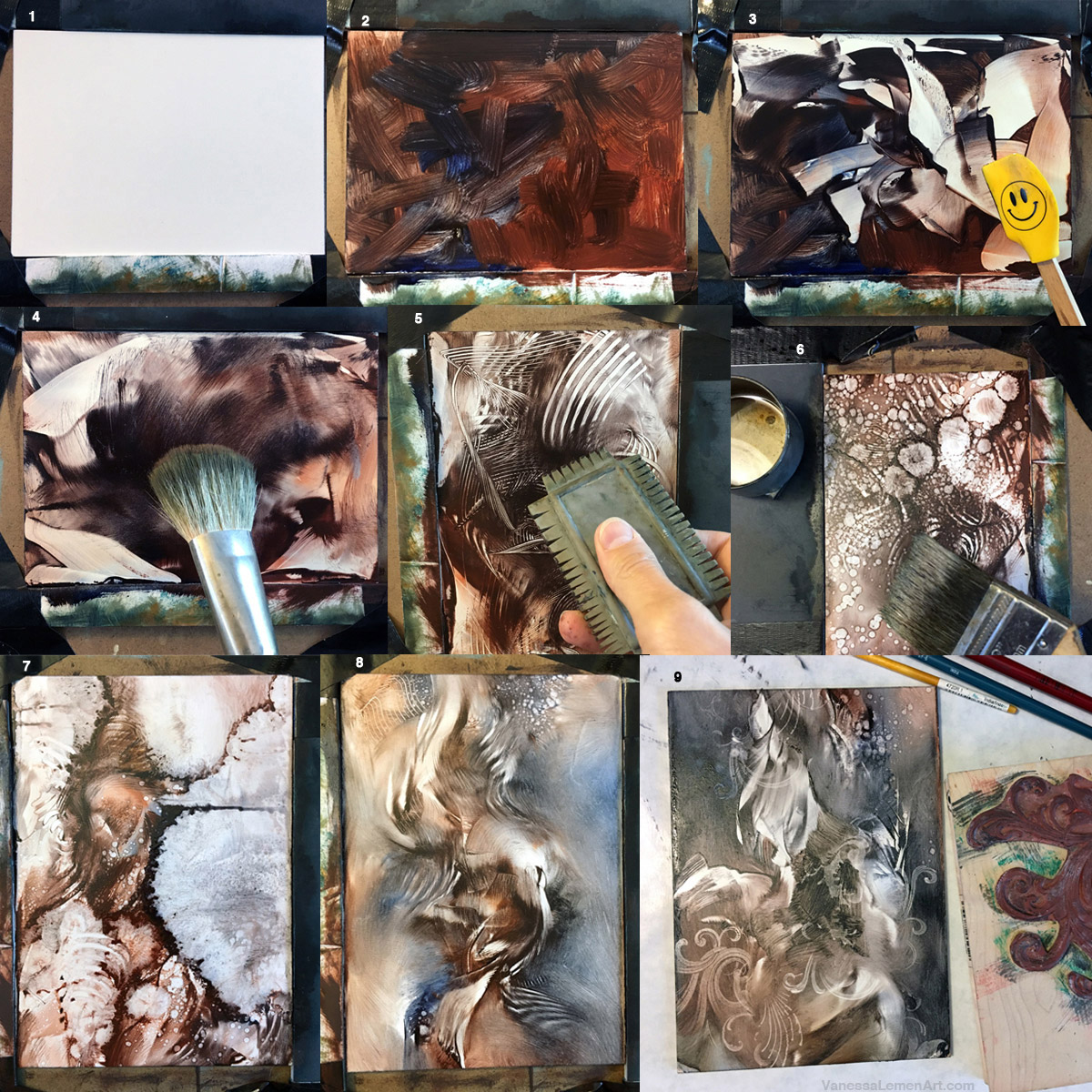 |
| beginning stages – making marks |
These first 9 images (above) show the different tools I used to make some initial marks on the surface. The surface I used (shown in image 1) is a 5×7” pre-gessoed masonite panel with a smooth finish. In image 2, I covered the panel with a tiny bit of linseed oil and a combination of a few new tubes of paint that I wanted to try out made by Rublev – Transparent Mummy, Hematite, Van Dyke Brown, Ultramarine Blue (Green Shade) – I mainly used these colors because they were new tubes of paint that I just got, and they all have different consistencies/viscosity/textures/thicknesses. It was fun to first just mess around with how the different colors felt in terms of their viscosity and textures. After experimenting with that for a few minutes, I used a small spatula (shown in image 3) to scrape away and smear, making marks by picking out back to the original surface. Because the surface is smooth/slick and not porous, it wipes away very easily with the silicone spatula. To make various marks with a spatula, it’s all in the pressure sensitivity (to pick out) and tilt control (to smear). Next (image 4), I used a big soft brush to soften the marks I made with the spatula using a very soft touch so as not to wipe away but just to soften. The different paint’s viscosity and textures were pretty evident when using this brush to soften in this stage as well. Next (image 5), I used a faux finishing comb to pick out over the softened surface. Pressure sensitivity, tilt control and direction I pull the stroke is also key to making this tool create various marks. Next (image 6), I splattered mineral spirits with a big chip brush while the surface is laying flat. To make small splatter marks, and I flick the brush with my finger, and to make bigger splatters, I fling the brush (fling the wrist/arm that’s holding the brush) or tap it with my other hand (*note* the brush appears as if it’s touching the surface in this image, but it is not – it’s held above the painting). Image 7 shows one of the many stages that combine the different mark-making. In this image, I should also note that I accidentally spilled the small cup of mineral spirits I had next to it onto the surface – as much as it made for some pretty interesting effects, it was very wet and messy and I ended up wiping it a bit with a towel and adding more paint to start some new marks. Image 8 shows a build-up of varying marks using all the tools mentioned above. Then (in image 9), I decided to add some marks by using a big rubber stamp as a pick-out tool by laying it on the surface with the marks from image 8. The painting needs to be at just the right wet/dryness in order for the stamp to pull paint from the surface. It was still wet, but it had paint and mineral spirits and a bit of linseed oil mixed and manipulated on it, and had been sitting for about 20 minutes or so.
 |
| mid stages of the painting |
Image 10 shows the abstract marks I ended up settling on for what would be the marks I would paint into. (I say settling, but I really loved this little abstract, actually). Sometimes, I do several of these and let them dry in order to paint into them at any given moment. This abstract was left over night, and I worked into it the next morning. Because the painting was still wet meant that any new marks I made on top of them had to be very sensitive in order to preserve the marks that were already there on the surface. I saw a face in the marks, and began to paint into the marks in order to begin pulling the face forward from the abstract. The very beginning phase of this is shown in image 11. I painted into the large planes of the face that I saw as being the lighter areas using a thin opaque mix of slightly greyed white (using the colors I mentioned above). In image 12, I continued with the light areas and built some of the darker planes in shadow as well as some half tones. In image 13, I continued to build the light, mid, and dark planes while also trying to preserve some of the abstract marks. I was mainly just trying to keep a good balance between abstract and rendered areas as I continued to pull the realized image from what I initially saw there in the marks. To get better coverage in some areas, I mostly used my brush in a toeing fashion (tapping ‘dry’ paint lightly using the tip of the brush) so that it didn’t wipe away the wet layer underneath.
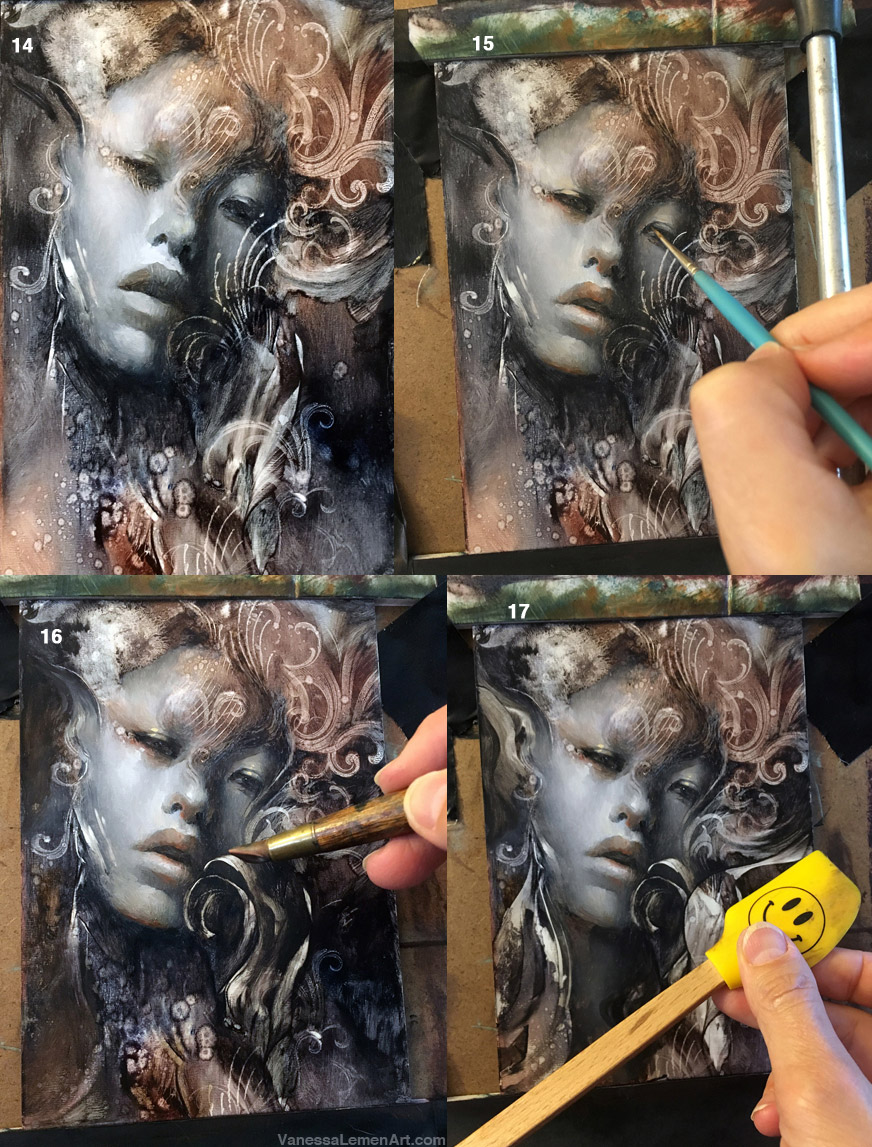 |
| finishing stages |
In image 14, I had rendered the face quite a bit, and then decided to pick out a little across some of the area I rendered using a different rubber stamp, the spatula and a smaller pick-out tool also used for sculpting (also shown in image 16). Image 15 shows the very small sable brush I used to paint into the smaller areas. I used the mahl stick (on the right of the image) to keep my hand and arm steady. Image 16 shows some of the marks I made with the small pick-out tool, trying to emulate the other marks that I had made previously with different tools by using the wedge-cut end and turning it as I pulled it to create a calligraphic mark. In image 17, after losing some of the marks I had made by brushing some thin darks over the top of them, I used my spatula to pick out across the lower two corners of the painting. These made for some really nice marks because the painting was starting to dry enough in some areas from the abstract stages done the day prior that it pulled some paint off in some areas and left hints of some there in other areas. …Aaand that about wraps it up for this painting.
Here is the finish:
 |
| finished painting |


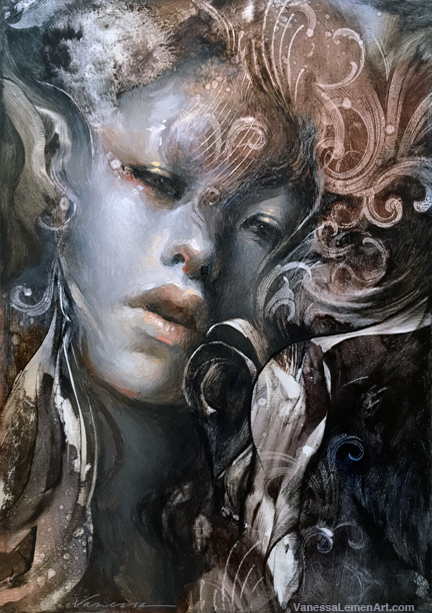
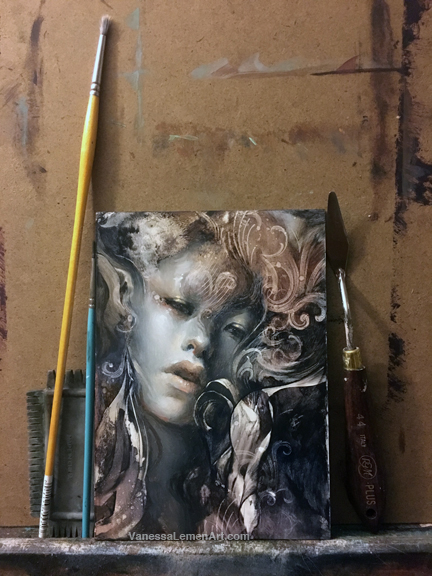

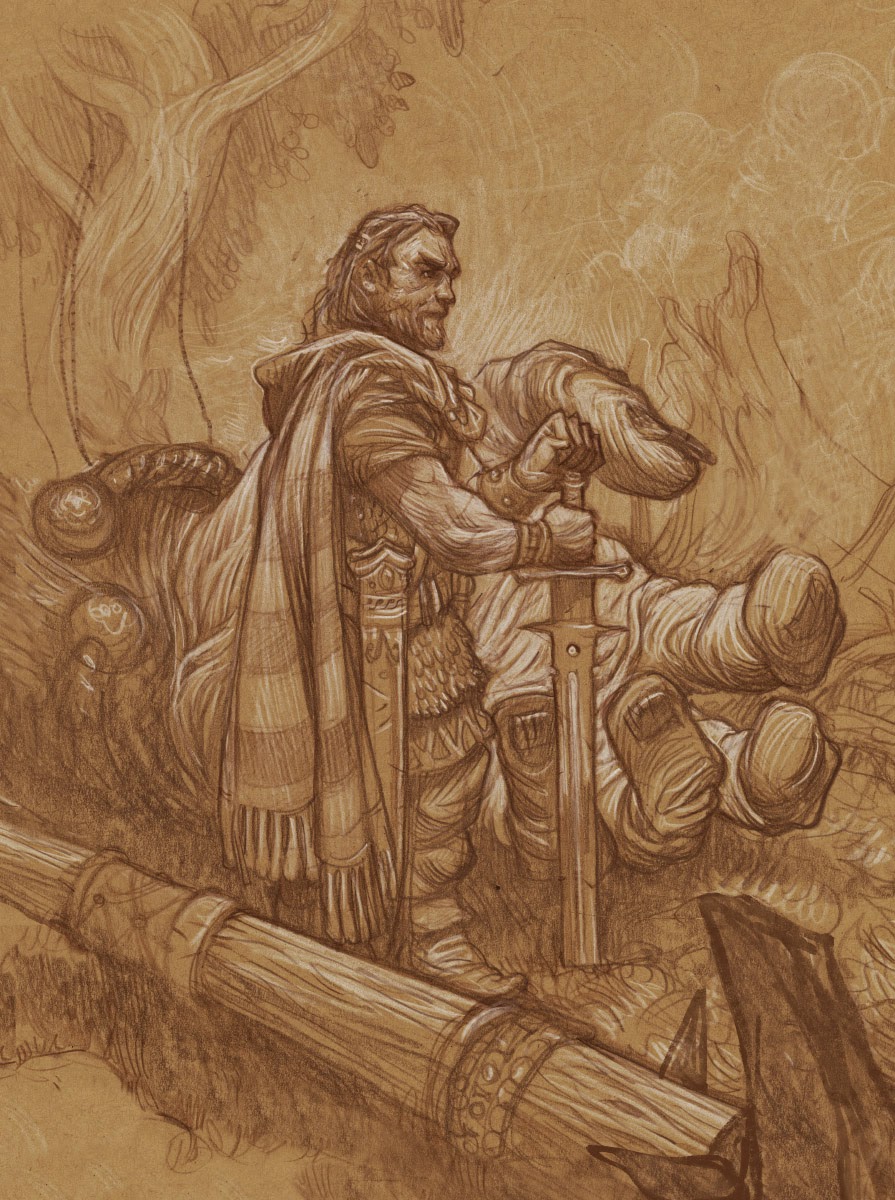
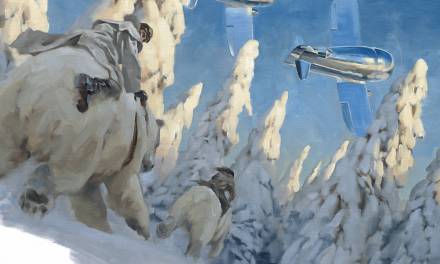
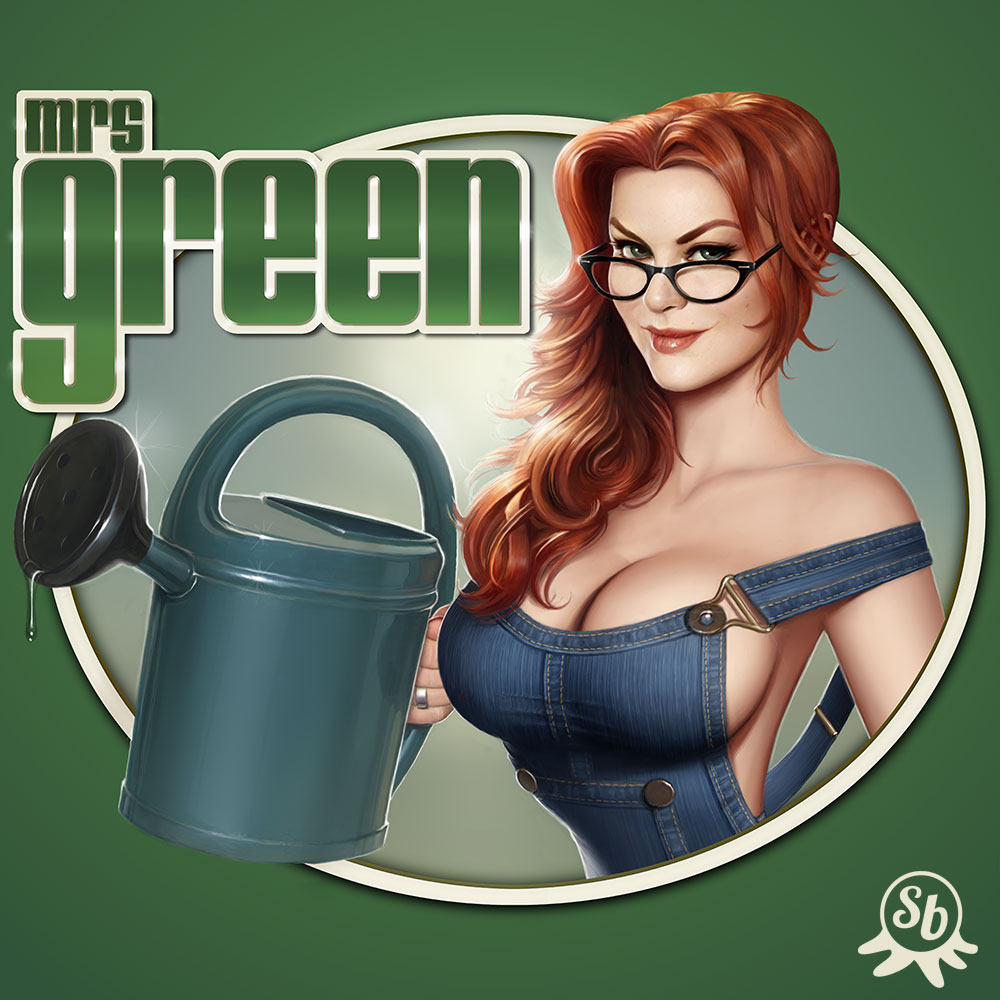
Wow Vanessa! That is truly incredible work at such a small size. You really did a fantastic job on this piece. Thanks for sharing-
Beautiful painting and one of the best step by step descriptions ever! Thanks!
Thanks much, Michael. I go back and forth between larger and smaller pieces, which does keep me from going *too* insane. ha. 😉 Glad you like it, and thanks for taking the time to check out the post.
Thanks for the good words about the painting, Mike! And I'm glad you enjoyed the step-by-step too. Thank you!
Only just discovered your work on EDO… Very inspiring. Love the small sizes you work at, too.